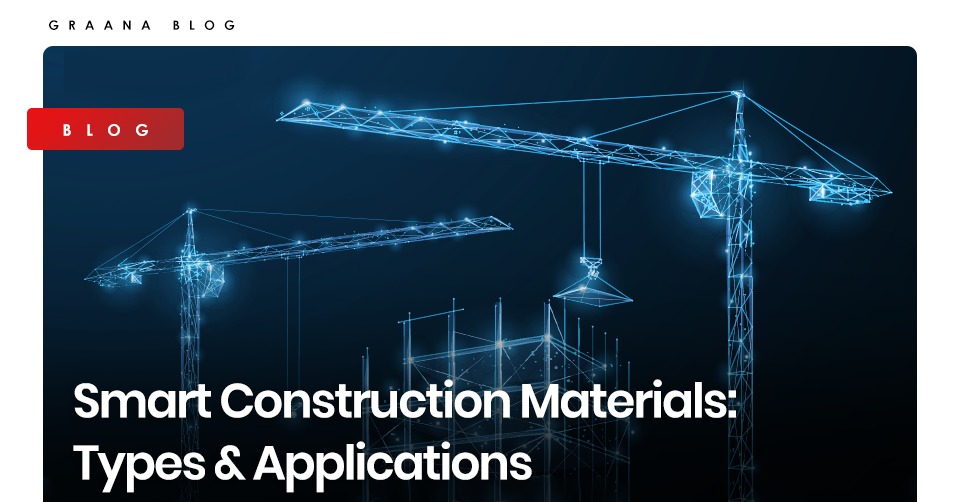
As the world comes to pace with the impact of climate change, nations around the globe are taking steps to attain sustainable development. Therefore, there is a shift from traditional building materials and an increased focus on the use of technology in the real estate industry. These materials not only ensure longevity but also make sustainable designs in commercial real estate possible. A great part of this sustainable development is being achieved through the use of smart construction materials. These are materials that undergo physical change due to external influences.
Temperature, light, stress, moisture, electric or magnetic fields, pH, or chemical compounds are all examples that can modify the properties of smart materials in a regulated way. These are also called intelligent or responsive materials.
Their distinct qualities make them essential materials in a variety of engineering applications. They are employed in various civil engineering projects and help improve a structure’s performance and energy efficiency.
New materials have been developed and different types of smart materials have been introduced as a result of technological advancements and research.
Graana.com, Pakistan’s smartest property portal, takes a look at some smart construction materials that are being used today.
The most common types of intelligent construction materials are as follows:
As the name suggests, SMAs have the property to regain their shape once a shape deforming force is applied to them. The most common use of SMAs is found in the seismic protection of buildings because these materials can absorb repeated strains of energy without suffering permanent deformation or damage.
SMAs are also known for their properties of:
Piezoelectric materials are those materials that produce an electric current when under stress. On the contrary, piezoelectric materials will undergo deformation if an electric current is passed through them.
Some properties of these materials are:
These materials deform mechanically in proportion to the square of the electric field i.e. they have the ability to change size in reaction to an electric or magnetic field, and produce a voltage when stretched. Pumps and valves, as well as an aeronautical wind tunnel, are some of the applications of these materials.
These are materials with colloidal suspensions that change viscosity when exposed to an electric field. These are very sensitive fluids that react instantly to any change in the applied electric field. Shock absorbers contain them.
When a voltage passes through these materials, their light transmission qualities change; they change the optical colour or opacity of a surface. They are also known as chromophores.
The real estate business has finally caught up with the digital age, with various technological advancements, including Smart Construction Technologies, ready to alter the industry.
These real estate technology developments, which range from Artificial Intelligence to Augmented Reality, will fundamentally transform the sector in the future years, transforming it into a more efficient industry with delighted clients. People can also have a look at this list of safety tips for visiting a building site in Pakistan.
To read more on the types of materials and techniques being used in the real estate industry such as types of stones, visit Graana.com.
Rawalpindi: The Punjab government has approved the construction of three underpasses along Peshawar Road, Rawalpindi,…
Karachi: Sindh Chief Minister Syed Murad Ali Shah on Thursday acknowledged that Karachi’s unplanned expansion…
Karachi: Pakistan’s foreign exchange reserves held by the State Bank of Pakistan (SBP) rose by…
Islamabad – The Capital Development Authority (CDA) has formally approved the construction of the IBM…
ISLAMABAD – A meeting was held at the CDA headquarters under the chairmanship of Capital…
Lahore: The Lahore Development Authority (LDA) has secured approval for the construction of four new…